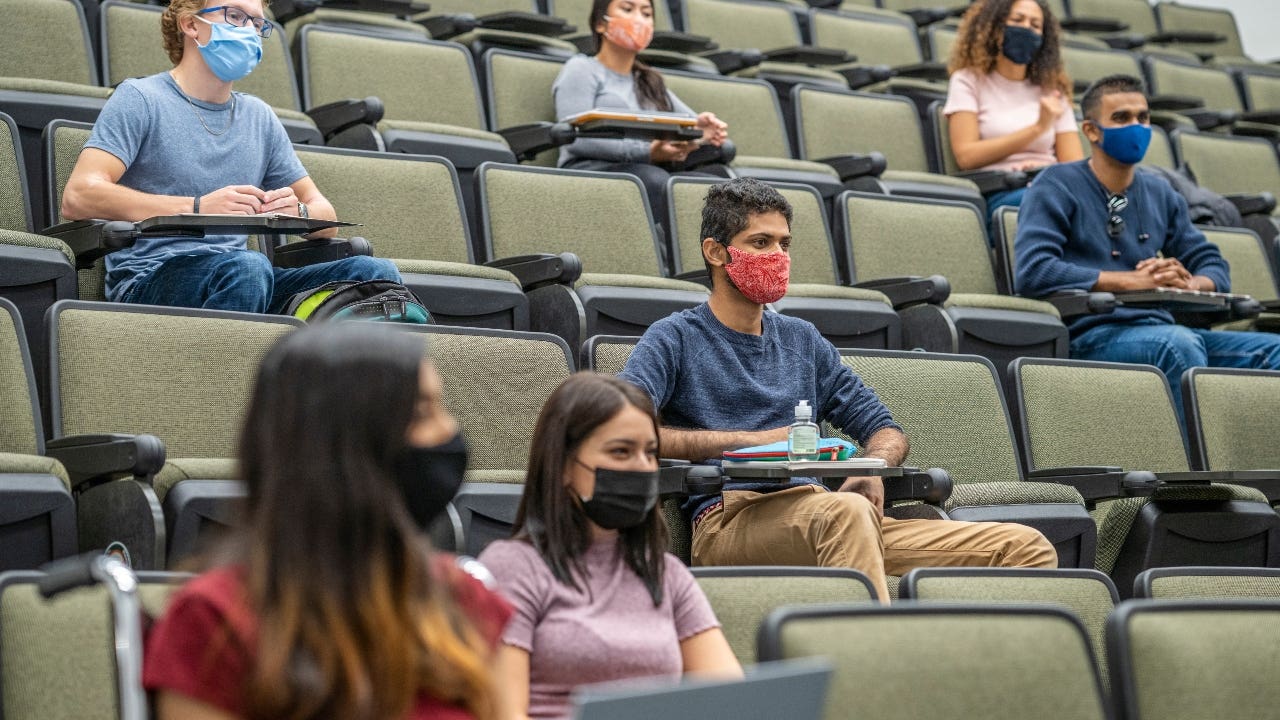Everything you need to know about the Higher Education Emergency Relief Fund

The Bankrate promise
At Bankrate we strive to help you make smarter financial decisions. While we adhere to strict , this post may contain references to products from our partners. Here's an explanation for .
The Higher Education Emergency Relief Fund (HEERF) is a federal program established during the COVID-19 pandemic that provides emergency grants to institutions. These grants are meant to financially support institutions during the pandemic, but institutions must award a portion of those funds to students.
Since its inception in 2020, the program has undergone three phases of funding: HEERF I, HEERF II and HEERF III. The final disbursement of $1.98 million under HERF III was distributed on July 13, 2022, formally ending funding under the program.
Here’s the complete history of HEERF grants, who can still qualify and how to apply.
What are HEERF grants?
Higher Education Emergency Relief Fund grants have been awarded to institutions with unmet financial need due to the COVID-19 pandemic. Under federal guidelines, schools are required to use the grants to better meet students’ basic needs, whether through need-based grants or better on-campus resources.
Students who receive money through the program can use the financial aid to pay for necessities like housing and food, as well as academic expenses like tuition. Most of the HEERF funding was allocated toward minority-serving institutions (MSIs), historically Black colleges and universities (HBCUs), community colleges, rural colleges and institutions serving a large population of lower-income students.
There have been three rounds of HEERF funding:
- HEERF I: Established under the Coronavirus Aid, Relief, and Economic Security (CARES) Act, HEERF I provided more than $14 billion to institutions. Institutions were required to distribute 50 percent of the grant money directly to students.
- HEERF II: HEERF II was signed into law on Dec. 27, 2020, through the Coronavirus Response and Relief Supplemental Appropriations Act (CRRSAA), granting $21.2 billion to institutions. Institutions were required to allocate the same dollar amount to students as they did through HEERF I.
- HEERF III: On March 11, 2021, the Biden administration signed the American Rescue Plan into law, which authorized the third and final stream of funding through HEERF III. This final round funneled $39.6 billion into the program, and institutions were once again required to allocate 50 percent of their funding to students.
Can I still qualify for a HEERF grant?
If your school has received HEERF funding in the past, there’s a chance that there could still be aid left to distribute, regardless of whether or not you’ve received an emergency grant through the program already. However, check with your school’s financial aid office first, as many colleges have already used up their HEERF money. As such, it’s best to act quickly.
U.S. citizens, permanent residents, international students, refugees, asylum-seekers, DACA recipients and other undocumented students in similar scenarios are eligible for grants through HEERF. Although the exact requirements can vary by school, students with the highest financial need and those who have faced unexpected financial emergencies due to the coronavirus are among those eligible.
How to apply for student grants
The application process for student financial aid through HEERF depends on the school. Some schools require that you’ve submitted the Free Application for Federal Student Aid (FAFSA), which allows them to see which students may be experiencing the most financial need. Sometimes, you may be required to submit a student emergency fund application — or a similar one — through your school’s financial aid office.
If approved, you’ll likely be notified through your school email or student portal, although the process may differ based on the school. To check on the status of your HEERF application, contact your financial aid administrator, your institution’s bursar’s office or your online student portal.
If your institution no longer has HEERF funding, you can explore other federal grants you might qualify for. The FAFSA is essential for these, and many depend on your expected family contribution (EFC) or career choice.
Other grants offered by your state, school or private organizations will have their own requirements and application processes. Grants are primarily need-based, but there are also scholarships for high-achieving students. Like with grants, the application process will vary, but most require essays or similar requirements to qualify.
The bottom line
While HEERF funding may still be available at some schools, you may need to rely on other federal, state and local grants to offset your college costs. There are also a variety of federal and private student loans you can consider. These do need to be repaid, generally, after you graduate, and can be a potential way to offset education expenses in the short term when grant funding is not available.
Related Articles



